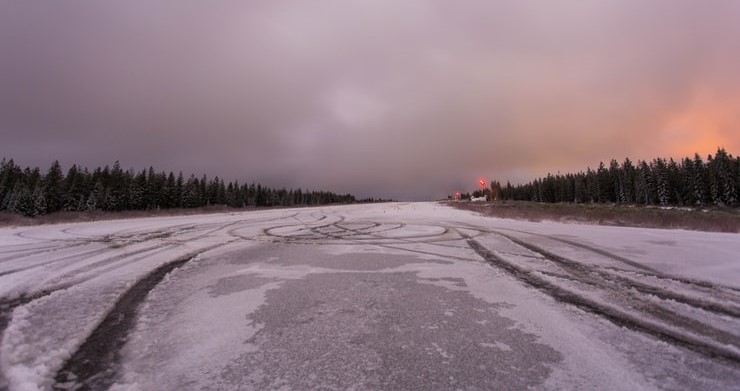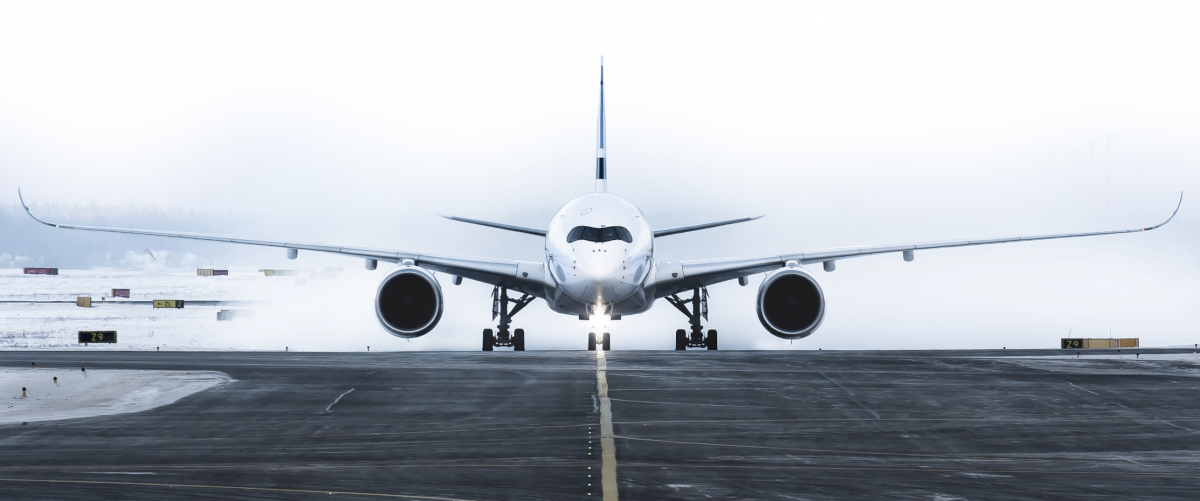
1. Dry snow on top of frost: as the most common NON-RCAM combination, this situation occurs when there is frost build-up on the runway and a snowfall front or wind is blowing on top of the frost.
2. Frost on top of ice: this situation occurs, especially in northern airports, when there is ice build-up on the edges of the runway and a frost build-up situation occurs. Thus, the frost is building up on top of the ice.
3. Slush on top of water: For example, when chemicals have been used on the runway, the chemicals make the runway surface wet. If a snowfall front comes, the snow floats on top of the chemical layer and forms slush or wet snow.
4. Frost and water/slush: Mainly during spring, when there is frost build-up on the runway during the night and then the sun warms the runway, the frost usually melts gradually; it means on some parts of the runway there might be water, on some other parts there might be slush, and some parts of the runway might still have frost on them.
5. Wet snow on top of water: Again, when chemicals have been used on the runway, the chemicals make the runway surface wet. If a snow front comes over the airport, the snow floats on top of the chemicals and forms a wet snow layer on top of the water.
6. Slush on top of ice: In rare cases, slush on top of ice might also be observed in real life.
What we hear a lot, is the inspectors are feeling pressure about the upcoming Global Reporting Format for the increased responsibility. The main tool for reporting the runway conditions is the inspectors subjective view of the runway condition. By using friction tester as supporting tool, the final decision is still up to the inspector, but he can feel more comfortable choosing the runway condition code when he has objective backup for his/hers decision, especially in the not clear NON-RCAM situations.
Based on our analysis of about 70.000 runway reports, there are cases where the pure RCAM selection can cause safety issue by giving higher runway condition code than the friction readings indicate. There are also many situations, where runway closure would occur based on RCAM but at the same time, friction tester is giving higher readings. This situation can generate unnecessary runway closures which are economically unwanted situations to the airport. This gives pressure for the inspector to down- or upgrade the RCAM value but the down- and upgrade should be based on total assessment. Here the friction tester comes valuable, as the inspector can look for all available information and can justify the down- or upgrade decision based on total assessment.
Safety and regularity in use of measured friction
By default, the RCAM table does not include a friction column. However, measured friction values are the only objective measured value from the runway surface. Thus, they are valuable information, specially in contaminant combination situations, when assessing the up- and downgrade of runway condition code. However, to be able to use friction as one assessment criteria or input channel, some basic issues should be taken care of before friction can be used:
1. Use friction tester’s specific guidance: The surface friction tester should have a specific guidance.
2. Take into account the friction tester’s operational envelope: The inspector should take into account the maximum contaminant depth limits per contaminant type when measuring friction according to the runway friction tester’s operational envelope. For example, if the layers of contaminant on the runway are thicker than what has been specified in the operational envelope, they might form wave in front of the measuring wheel. In this case the measured friction values are not reliable.
3. Collect and analyse data: The regulations encourage the use of friction testers in a comparative way. In order to have a comparative base, data needs to be collected (at least about one year’s data) and compared to reported RCR´s. Later on, the inspector can compare the measured friction value to this data in order to select runway condition code value.
4. Declare friction tester’s annual maintenance and weekly calibration check programs: The airport operator must declare the friction tester’s annual maintenance and calibration program as well as the friction tester’s weekly calibration check program or at least the calibration check. In this manner, it can be assured that the measured values will remain repeatable in the same surface.
5. Declare inspectors’ initial training and periodic refreshment training programs: The inspectors’ initial training for the friction tester as well as periodically refreshment training programs should be declared to maintain the right operation policies and methods when measuring friction.
To conclude, through respecting the above conditions, measured friction can safely be used as one assessment criteria when assessing runway condition. Friction values are valuable information specially when assessing upgrade or downgrade of runway condition code and also for relieving the stress of the inspector with the important job. The data collection is the key to success. The comparative way is a safe way to use friction tester when GRF becomes effective.
If not already done, check here if you have done all the necessary preparations for GRF. If you wish to have more information about our analysis or how to use friction tester properly, feel free to contact us.



